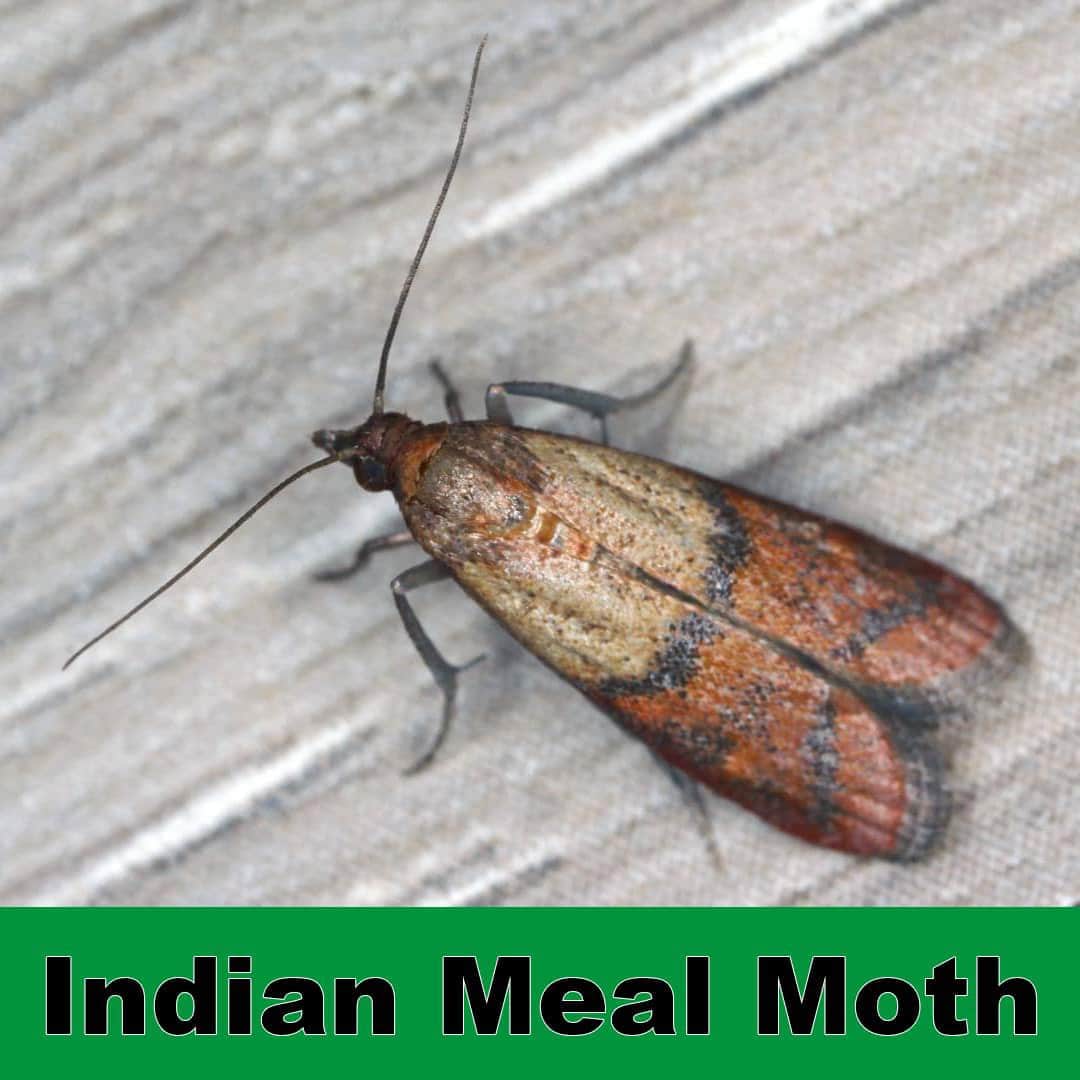Call Us Now: 330-832-4642 | 330-494-8873

Size: 1/4 inch; 3/4 inch wing span
Color: Gray with light band on forewings
Where found: Grain products, flour, pasta
Potential treatment: Interior
The Indian meal moth is the most common food pest found in homes. Infestations generally begin when unsuspecting homeowners bring already infested food into their homes. The larvae of these pests are so small, they can crawl into packaged food despite the best efforts of manufacturers and grocery stores.
Meal moths are small moths, although their wings open to 3/4 of an inch tip to tip. When their wings are folded, they have a distinctive light colored band across the forewings with copper coloring extending to the tips. Their life cycle is a complete metamorphosis, including egg, larvae, pupae and adult, all residing in the infested food product.
Products favored by the meal moth include flour, pasta, cereal, cornmeal, spices, dried fruit, nuts, dry pet food and bird seed. The adult moth lays very small, whitish eggs on the grain products in groups of 12 to 30. Once hatched, the larvae feed on the grain products.
Larvae are visible as yellowish worms that grow to 5/8 of an inch before they spin cocoons. Infested products will exhibit a significant amount of webbing once the larvae reach this stage. Adults emerge about 30 days after the cocoon stage.
The complete life cycle (egg to adult) is about 55 days. All stages can be evident in infested foods. Meal moths are not disease carriers and no illness has been documented due to people or pests ingesting infested foods.
Infestations of meal moths are best controlled by removing all infested products and thoroughly inspecting all products that could be favored by the pest. Keeping grains and pasta in the refrigerator is advisable when attempting to control an infestation.